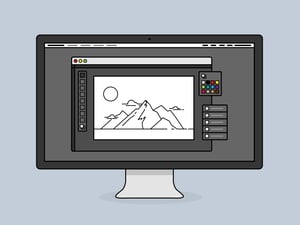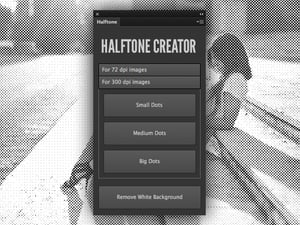
How to Create an Atmospheric Cityscape Bathed in Clouds
Merge two images with layer masks and Camera Raw Filter in Photoshop
This tutorial will teach you how to combine two images with Photoshop to create an atmospheric cityscape that is bathed in clouds. The techniques that we will use include layer masks and Camera Raw Filter.
Step 1
Start by creating a new 2400 x 1600 pixel RGB document in Photoshop.
Step 2
Place your cityscape image into the document. I am using this image downloaded from Unsplash. Resize and position the image so that the skycapers are roughly in the middle of the canvas.
Step 3
Next we are going to place the clouds image on top of the cityscape. I am using this image downloaded from Unsplash. Resize and position the image so that the cloud horizon line is roughy 1/3rd from the top of the canvas.
When I set the opacity to 50% you can see that the tallest buildings in the cityscape reach above the cloud horizon line.
Step 4
With the clouds layer selected go to Layer > Layer Mask > Reveal All and then use the Gradient tool (G) to draw a a linear Black to White gradient on the layer mask. The gradient should be very short and overlap the cloud horizon line as shown in the screenshot below.
Step 5
Set the opacity of the clouds layer to 50% so that the cityscape can be seen below.
Step 6
Use the Polygon Lasso Tool (L) to create a selection around the buildings that will be showing through the clouds.
Step 7
Set the Opacity back to 100%. Then with the layer mask highlighted in the Layers panel, draw another vertical Black to White linear gradient inside your selection. This time the gradient should have a more gradual fade as shown in the screenshot below.
Step 8
Use the Brush tool (B) and choose a soft round brush preset. Set the Opacity to 10% and tweak the mask by painting around the edges with white to show more clouds or black to hide mistakes. The purpose of this step is to make the clouds look more realistic by reducing the uniformity of a linear gradient.
Step 9
When you are happy with the result, Select All (A), Copy Merged (CMD+SHIFT+C) and paste a copy above the existing layers. We are going to use the Camera Raw Filter next so we also need to convert this layer to a Smart Object.
Step 10
Go to Filter > Camera Raw Filter... and use the sliders to create a dramatic sepia tone effect. You can experiment with this manually or use the exact same settings shown below. Don't worry about it looking too extreme at this stage.
Step 11
Because the lighting effect we created in the last step was quite extreme, we can tone it down and also make it look more realistic by reducing the Opacity of the layer to 70% and allowing the original layers to show through and balance things out.
Result & Conclusion
Here is the final result. The dramatic lighting really brings the image together and makes the whole scene look even more surreal. What would normally be a very time consuming task to mask all of the buildings with just the brush tool, is made much more efficient by using gradients and selections to speed things up. I hope you enjoyed following along with this tutorial and learned something new.






















Comments